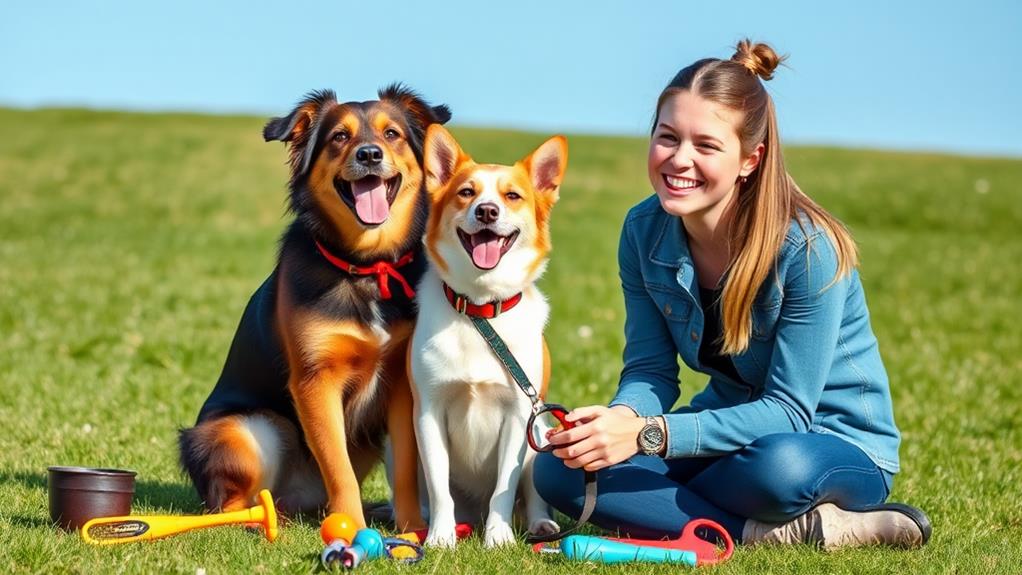Effortless dog training starts with a few simple tips that make the experience enjoyable. First, focus on basic commands like "sit" and "stay" in a quiet space. Use positive reinforcement by rewarding good behavior immediately. Keep your training sessions short, ideally 5-10 minutes, to match your dog's attention span. Consistency is essential, so maintain a regular schedule and be patient; every dog learns at their own pace. Finally, socialize your pup early by exposing them to new environments and experiences. These fundamentals will set you up for success, and there's so much more to explore!
Start With Basic Commands
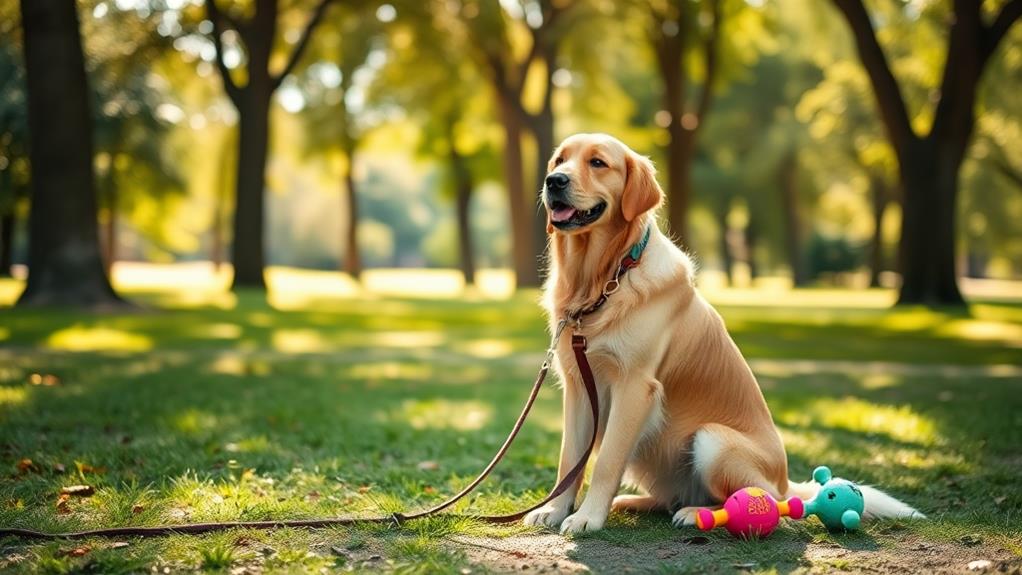
To kick off your dog training journey, begin with basic commands like "sit," "stay," and "come." These foundational skills are essential for establishing communication between you and your furry friend. Start by choosing a quiet space free from distractions, so your dog can focus on you.
When teaching "sit," hold a treat above your dog's nose, then slowly move it back over their head. As their bottom naturally lowers, say "sit" and reward them as soon as they comply. For "stay," ask your dog to sit, then take a step back while holding your palm out. If they stay put, reward them promptly.
When teaching "come," call your dog using a cheerful tone while backing away a bit. When they reach you, praise them enthusiastically. Consistency is key. Practice these commands daily, keeping training sessions short and engaging.
Use Positive Reinforcement
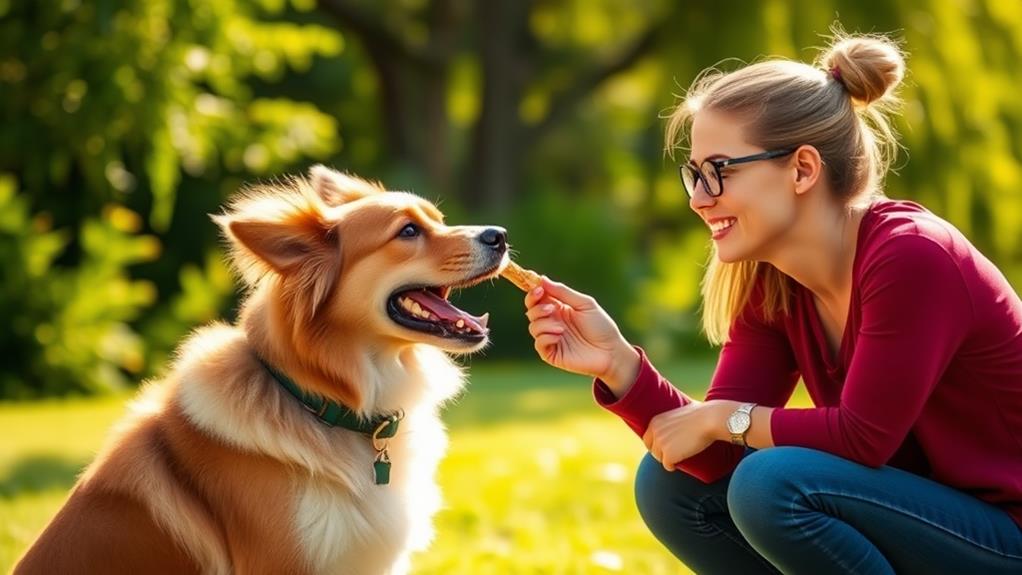
Positive reinforcement is a powerful tool in dog training that encourages good behavior through rewards. Instead of punishing your dog for mistakes, focus on rewarding them for actions you want to promote. When your furry friend sits on command, give them a treat or praise them enthusiastically. This creates a positive association with the desired behavior.
Consistency is key. Make sure you reward your dog every time they perform the desired action at first. This helps them understand what you expect. As your dog becomes more reliable, you can gradually reduce the frequency of treats but continue to offer praise.
Timing is essential too. You should reward your dog immediately after they follow a command. This helps them connect the action with the reward, reinforcing the behavior you want to see.
Keep Training Sessions Short
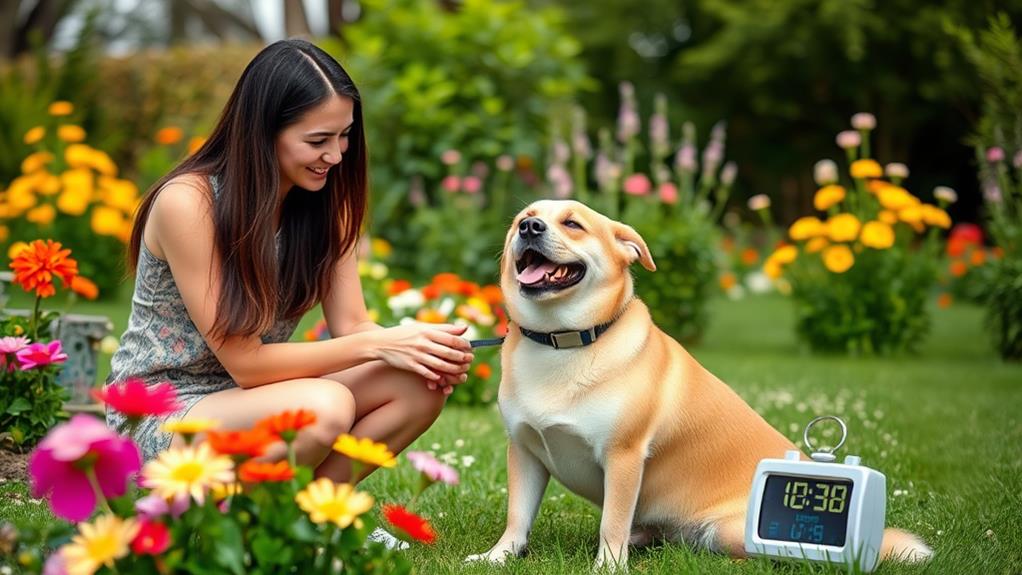
Rewarding your dog for good behavior is just the start of successful training. To maximize your efforts, keep training sessions short and focused. Dogs have limited attention spans, so aim for sessions lasting about 5 to 10 minutes. This prevents boredom and helps your furry friend stay engaged. You'll find that shorter, more frequent sessions yield better results than long, drawn-out ones.
During these brief training sessions, choose one or two commands to work on. This allows your dog to grasp each command effectively without feeling overwhelmed. Make sure to incorporate plenty of praise and rewards to reinforce positive behavior.
If your dog seems restless or distracted, it's a signal to wrap up the session. Always end on a positive note, rewarding even the smallest successes to maintain motivation. Consistent short bursts of training will help your dog learn faster and enjoy the process more.
Be Consistent and Patient
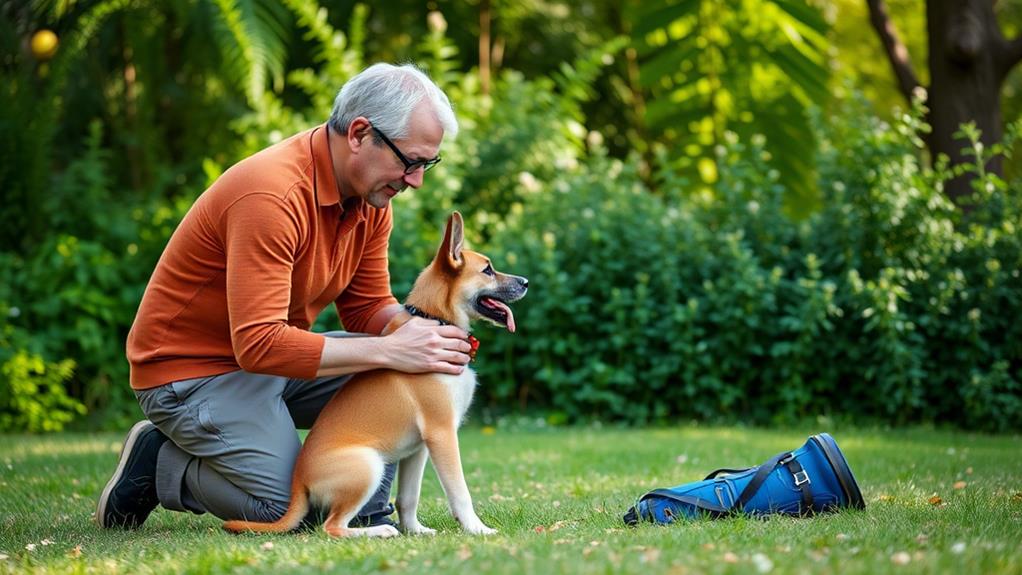
Consistency and patience are essential when training your dog. You'll find that sticking to a routine helps reinforce the behaviors you want. Dogs thrive on repetition and predictability, so make sure to use the same commands and signals every time. This will prevent confusion and create a clear understanding of what you expect from them.
While it might be tempting to rush the process and expect immediate results, remember that every dog learns at their own pace. Some days will be better than others, and that's okay. Celebrate small victories and don't get discouraged if things don't go as planned.
Set a regular training schedule: Dedicate specific times each day for training sessions.
Use positive reinforcement: Reward your dog for good behavior consistently to encourage them.
Stay calm and composed: Your energy influences your dog; maintain a positive attitude even during setbacks.
Socialize Your Dog Early
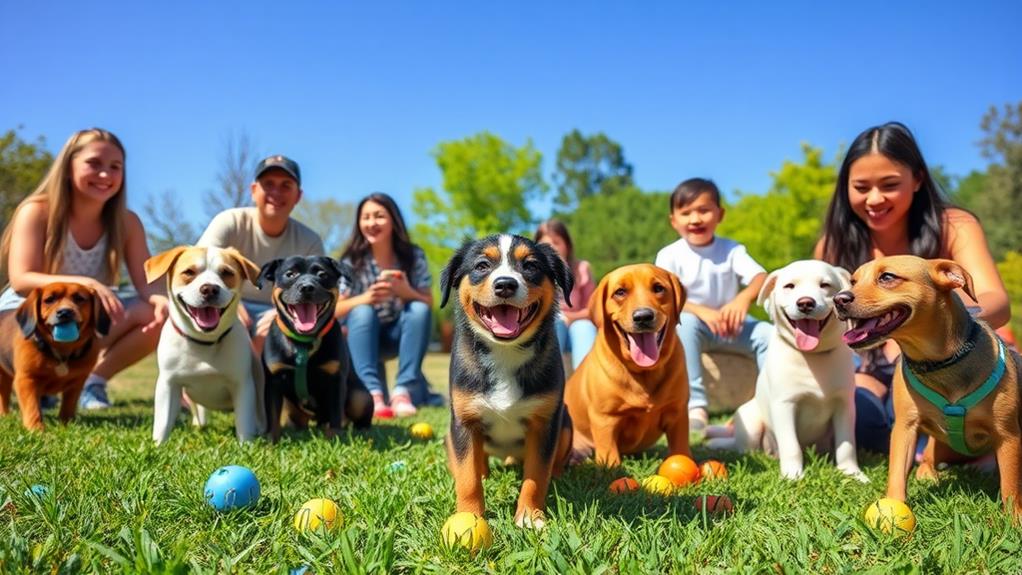
Socializing your dog early is critical for their development, as it helps them become well-adjusted and confident adults. The essential period for socialization is between 3 and 14 weeks, so take advantage of this time. Expose your pup to a variety of people, environments, and other animals. This will help them learn how to react positively in different situations.
Start by inviting friends over or taking your dog to dog-friendly parks. Let them interact with calm, friendly dogs and observe how they behave. Focus on positive experiences; if your dog seems overwhelmed, give them a break and try again later. The goal is to build their confidence through positive interactions.
Don't forget about various sounds and sights. Play recordings of loud noises or visit busy places to help your dog adapt to unexpected stimuli. This will make them less fearful and more adaptable as they grow.
Lastly, consider enrolling in puppy classes. These classes not only provide structured socialization but also teach you how to manage your dog's behavior. By socializing your dog early, you're setting the foundation for a happy, well-adjusted companion.
Frequently Asked Questions
What Age Is Best to Start Training My Dog?
You can start training your dog as early as eight weeks old. Puppies are enthusiastic to learn, and early socialization helps them develop good behavior. Just remember, patience and consistency are key throughout the process!
How Do I Handle Distractions During Training?
Studies show 70% of training sessions face distractions. To handle them, keep your dog focused by using treats or toys. Gradually increase distractions as they improve, and always reward their attention to reinforce good behavior.
Can I Train My Dog Using Only Treats?
Yes, you can train your dog using only treats. Just make sure to gradually incorporate other rewards, like praise or playtime. This'll help keep your dog's interest high and enhance their overall learning experience.
What Should I Do if My Dog Refuses to Learn?
If your dog refuses to learn, stay patient and reassess your training methods. Try varying your approach, using different rewards, or reducing distractions. Consistency and positive reinforcement can often ignite your dog's motivation to engage.
Are There Specific Breeds That Are Easier to Train?
You might think every dog's a genius, but some breeds, like Border Collies and Poodles, are naturally easier to train. They thrive on mental challenges, while others may need more patience and creativity from you.
Conclusion
In the enchanting journey of dog training, remember that every wag of the tail is a step forward. Embrace the joy of learning together, and let patience be your guiding star. As you sprinkle in those moments of positive reinforcement, you'll watch your bond blossom like a vibrant garden. With consistency and a sprinkle of fun, you'll transform training from a chore into a delightful dance, leading to a harmonious partnership that brings endless joy to both of you.

